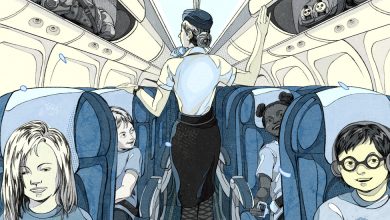The Case for Mandatory National Service

A few weeks ago, I debuted a running feature called “The Magic Wand,” where I throw out an idea and make the case for it in this newsletter. This week, I want to suggest a solution to the civic worker problem that would bring in a fleet of new employees into some of the more unskilled, less in demand, but ultimately invaluable positions that are indispensable to functioning communities.
The Problem
Last month, the Times published a story about the severe understaffing of New York City’s municipal services. “The wave of departures has included health care workers, parks employees, police officers and child protective service workers,” my colleagues Dana Rubinstein and Emma G. Fitzsimmons reported. Nearly 8 percent of city jobs are currently vacant, a rate that is five times higher than in recent years. It’s difficult to pinpoint a specific cause for this situation — The Times’s story cited slow hiring processes, better opportunities in other fields, and the hangover from a pandemic hiring freeze that ended in November 2021.
New York City is certainly not the only city facing a civic employee shortage. In San Francisco, municipal staffing problems have gotten so bad that workers have taken to the streets demanding that the city fill vacant positions. The city of San Diego, as of this spring, had an eye-popping 16 percent job vacancy rate for its various agencies and services. Washington D.C., which is facing a police shortage, started offering a $20,000 hiring bonus to new officers who join the force.
The effects of all these civic worker shortages can be felt in nearly every facet of life. Trash doesn’t get picked up; the police take longer to respond to calls; services that help the homeless suffer from chronic understaffing and infrastructural failure.
The Solution: A Major Expansion of AmeriCorps
In late March, the White House proposed a more than 16 percent increase to the budget of AmeriCorps, a federal service program that gives people a modest stipend to work on various projects across the country. If approved, the agency would receive a total of $1.34 billion, which will go to supporting “250,000 AmeriCorps members and AmeriCorps Seniors volunteers” and “support targeted investments in communities where the need is greatest.”
Instead of just adding 16 percent to the budget of AmeriCorps, the White House should increase the size of the AmeriCorps work force from 250,000 to three million (for the rest of this column, I’ll refer to it as Mega AmeriCorps), embark on a substantial press tour to promote it, and broadly expand the benefits of enrolling in the program. This would be the first step in eventually calling for a revival of the Universal National Service Act, which would require every American to commit two years of their lives to national service between the years of 18 and 25.
This idea might sound scary at first blush, but was actually part of the Democratic mainstream as recently as 14 years ago when Barack Obama seriously discussed a similar idea during his 2008 campaign. Charles Rangel, the former longtime Democratic congressman from New York, repeatedly called for forms of compulsory service for years. More recently, Pete Buttigieg floated the idea while campaigning in 2019. Last year, my colleagues on the editorial board asked if young Americans should be required to do a year of service.
The issue, as the editorial board pointed out, is that it’s difficult, potentially illegal, and perhaps even morally wrong to compel young Americans into a period of service. That said, it’s also difficult to imagine that these programs could become voluntary societal norms without a radical shift in the sense of precarity and pressure that young people feel on a daily basis.
What’s needed is a real test run for universal national service; one that’s championed by the government and not just an assortment of nonprofits like, say, Teach for America. Mega AmeriCorps could be just that. A new fleet of workers, mostly between the ages of 18 and 25, could be placed in cities, towns, and rural areas with civic labor shortages. They should be provided housing, a livable salary, and a job training infrastructure that will not only prepare them to do their work, but also set them up for a career in whatever civic organization they enter.
The key for success would be a slow, but ultimately forceful normalization of joining up with Mega AmeriCorps after high school, which would have the added effect of lessening the pressure that many kids feel to compete and excel in their academic pursuits. Access to higher education plays far too large a role in nearly every facet of American life, from what salary you earn to what side of the political divide you fall. This would be a conscious effort to reduce the importance of a postsecondary education by creating a bridge between high school and a career that could allow you to circumvent the need to go to college at all. Much of the money that goes to Mega AmeriCorps would be spent on training and apprenticeship programs to get young people credentialed and prepared for a career.
Even middle-class kids who might ultimately find their way to a four-year college could be encouraged to join up with AmeriCorps with the proper incentives. For what feels like years, the White House has been debating student loan forgiveness. While I’m not entirely sure about tying existing loan forgiveness to Mega AmeriCorps, I do think the White House could partner with states and, much like the G.I. Bill, offer to supplement or fully cover the state or community college tuition of anyone who had completed two years of service. The service time would also count as class credits and could even help with admission into more exclusive state schools. This would also reduce tuition costs by cutting down on the time a Mega AmeriCorps graduate needed to be on campus.
Here’s a specific example of how it could work
I’ve written quite a bit about how one of the enduring and less-discussed problems with homelessness in California is that there simply are not enough workers to carry out the grand plans of politicians or even maintain the current raft of services. This is understandable even in times when civic agencies are fully staffed, for the very simply reason that working with the homeless isn’t easy.
Currently, much of the homelessness work in California gets contracted out to third-party nonprofits like Urban Alchemy, an organization that helps formerly incarcerated people find work. But the intensity of the homelessness crisis and the labor shortage have placed a great deal of strain on these organizations to keep up with demand.
An energized and well-funded Mega AmeriCorps could produce a new work force to engage with the homeless at every level: Outreach on the streets, support to get people into shelters or into permanent housing, and then follow-ups once people have stabilized. Because it’s a federal program, it would be easier for the public to monitor than third-party nonprofits. And while it might be true that many of the young people who go into these jobs will not work in homelessness services for their whole career, there will at least be enough bodies around to run everything from shelters to permanent supportive housing services to harm reduction centers to so-called “Safe Sleep” sites.
An admittedly too-broad and unpopular opinion
I, myself, am an AmeriCorps alumni. I did an environmental restoration program in Seattle when I was 19 years old. I was not an ideal employee by any means, but I did plant some trees and learn quite a bit about forestry, climate change and park maintenance. I also learned that there is a value to service, which was an invaluable lesson during a dark time in my life when the thought of going to college and pursuing some sort of career seemed like an impossibility.
Some of these revelations came from just growing up a bit, but I do think that there was something about the almost conscripted feel of the organization that provided me with a sense of duty to the city of Seattle and the Pacific Northwest. I joined AmeriCorps as a teenager because I did not have any other plans with my life, nor did I have any skills. It was, in effect, the only place that would take me and give me something to do.
Today’s young people are dealing with much more than I did back around the turn of the millennium. Many feel hopeless and depressed. National service is not a panacea for these ailments, nor can it change the economic precarity that many young people feel, but it can provide a sense of community and a meaningful pathway into a career that falls outside of the clogged and ultracompetitive pathways that exist today.
I do not support compulsory military service, but it seems clear to me that many of the problems with political polarization and the atomization of the individual in this country come from the fact that there are increasingly few places where people from different economic backgrounds can work together for a good cause.
Among the elite classes, the idea of service has mostly been reduced down to a line item on a college application. The much-discussed divides in this country, whether economic, racial or educational, cannot be solved through some feat of wonkery or through pretty speeches by politicians. What needs to exist is some place that can pool a lot of different young people together. College will never accomplish any of that in the way that two years of service — hopefully eventually two mandatory years of service — could.
The good news is that AmeriCorps already exists. It’s time to turn it into something much more ambitious and hopefully let its example pave the way for a national service requirement.
Jay Caspian Kang (@jaycaspiankang), a writer for Opinion and The New York Times Magazine, is the author of “The Loneliest Americans.”
Have feedback? Send me a note at [email protected].




